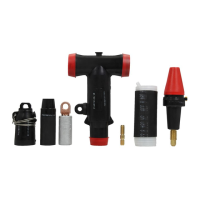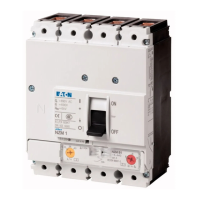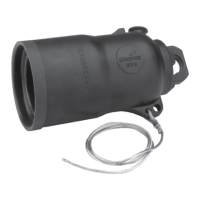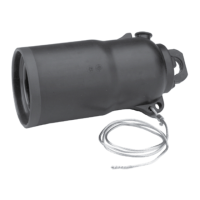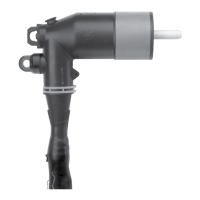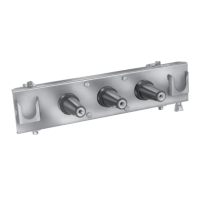Section 8: Troubleshooting
When using the CL-6 control with an Eaton regulator,
refer to Service Information MN225008EN VR-32 Voltage
Regulator with Quik-Drive Tap-Changer Installation,
Operation, and Maintenance Instructions for additional infor-
mation on the regulator operation and maintenance.
External check
Examine the power connections first. For example, verify
that the load lead is connected to the source bushing and
that the source-load lead is connected to the source-load
bushing. Check for other potential problems, such as an
open ground connection.
Defining the problem
Determine which of the following categories best describes
the malfunction and follow the corresponding steps. Refer
to the Appendix, Figures 10-1 through 10-4, while diagnos-
ing the problem.
Note: Parameter options, accessed via menu or function
code, are shown in bold.
Settings of front panel switches are shown in bold.
Keypad directions are shown as follows: press keys
as shown in bold; enter numbers as shown in
italics.
Control panel troubleshooting
No power
Check the 6 A motor fuse on the control front panel.
Remove the fuse from the control and check for continuity
across the fuse. Spare fuses are shipped with each control
and are located in the control box.
Note: Use only 125 V, 6 amp, fast-blow fuses of the
proper current rating. Failure to do so may cause
unnecessary fuse operation or insufficient protec-
tion of the regulator and control.
If the fuse has blown, the tap-changer motor will not run. If
the 6 A fuse is okay, set the front panel POWER switch to
Internal Power and check the following :
1. With a voltmeter, check TB
2
-V
S
to G. The voltage
should approximate the set voltage. If the voltage is
present at TB
2
-V
S
, then the problem is in the control.
Replace the control.
2. Check the voltage-disconnect knife switch V
1
, V
6
(if
present), and the current shorting knife switch C of
the back panel in the control enclosure. Close the V
1
and V
6
voltage switches if open. Open the CT shorting
switch if closed.
3. Check the voltage at V
1
to G. If the voltage is present
at V
1
to G, then the problem could be in the wiring
harness or ratio-correcting transformer. Check for
loose connections or burnt wiring. Verify that the ratio-
correcting transformer RCT
1
is on the correct tap for
the regulated voltage as shown on the nameplate on
the control enclosure door.
4. If voltage is not present, then the problem is either in
the control cable, junction box connection, or inside of
the regulator.
Self-diagnostics
The control hardware performs self-diagnostic physical
and memory checks. There are two events which force the
control into the self-diagnostic routines: (1) Power is turned
on; (2) Operator entry of the self-test mode (FC 91).
The duration of this test sequence is approximately three
seconds. At completion, the display will indicate PASS
or display an error message if a problem is found. (See
Diagnostic Error Messages in the next section of this
manual). The PAS S message will remain in the display until
the operator makes an entry through the keypad or, after 20
minutes, the display will automatically be turned off.
The clock will maintain time-keeping for at least 24 hours after
loss of ac power to control. The backup power source requires
65 hours operation on ac power to become fully charged.
Note: After the self-diagnostic and the LCD displays
PASS, press Escape for further keypad use.
Note: The word ERROR on the LCD indicates a key entry
error, not a diagnostic failure. See Indication
Messages in the Control Programming section
of this manual.
Diagnostic error messages
If the control indicates a failure on power up, the LCD
displays an error message. This message will give
information about the problem detected. Also, as long
as there is a diagnostic error message, the Diagnostic
Error LED indicator will be lit. Messages may include No
Neutral Sync Signal, Input Voltage Missing, and
Configuration Value Required. For more information,
refer to Power-Up/Reset Conditions in the Control
Programming section of this manual.
WARNING
Hazardous voltage. When troubleshooting energized
equipment, protective gear must be worn to avoid
personal contact with energized parts. Failure to comply
can cause serious injury or death.
102
CL-6 SERIES CONTROL INSTALLATION, OPERATION, AND MAINTENANCE INSTRUCTIONS MN225016EN January 2016

